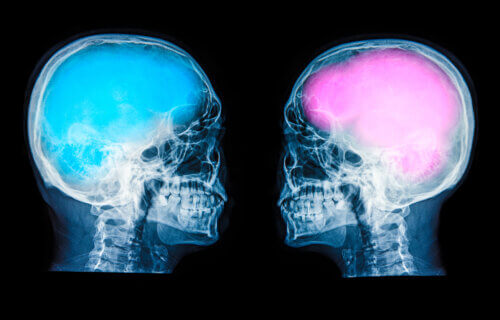New research out of the University of Southern California just might debunk the long-held belief that male and female brains are “hardwired” differently. The findings, published in the journal Human Brain Mapping, suggest that sex differences in the brains of young adolescents are subtle and do not amount to two distinct, non-overlapping phenotypes.
The study, led by Carinna Torgerson, is the largest neuroimaging study to date using a non-dichotomous assessment of gender. By examining the brains of over 7,000 children aged 9 to 11, the researchers sought to disentangle the effects of sex and gender on brain structure during a critical period of development.
Traditionally, studies have relied on binary classifications of sex and gender, often using the terms interchangeably. However, sex refers to biological attributes such as chromosomes and hormones, while gender is a multidimensional construct encompassing identity, expression, and societal expectations. Torgerson and her team recognized the need for a more nuanced approach and employed a continuous “felt-gender” score to capture the spectrum of gender diversity among their participants.
Using advanced neuroimaging techniques and innovative statistical modeling, the researchers examined four key domains of brain structure: subcortical volume, cortical thickness, gyrification, and white matter microstructure. They then determined whether sex, gender diversity, or a combination of the two best explained the variations observed in each domain.
The results were striking. While sex alone accounted for the most variance in brain structure in the majority of regions examined, the effect sizes were negligible to small. This suggests that sex differences in the brain at this age are subtle and do not support the notion of “hardwired” differences between males and females.
Moreover, gender diversity itself was not directly associated with brain structure in any region. Although models including both sex and gender captured more variance in a few areas, such as the cerebellum and precentral gyrus, the felt-gender score alone was not a significant predictor.
“The effect sizes of these sex differences across a variety of macro and microstructural measures were universally small to negligible,” Torgerson, et al write in their conclusion. “This suggests that sex accounts for very little of neuroanatomical variability seen in early adolescence.”
These findings challenge the popular narrative that male and female brains are fundamentally different and predetermined by biology. Instead, they suggest that brain development is a complex process shaped by a myriad of factors, including genetics, hormones, and life experiences.
To arrive at these groundbreaking conclusions, Torgerson and her team employed a rigorous and innovative methodology. They leveraged data from the Adolescent Brain Cognitive Development (ABCD) Study, a monumental research endeavor tracking the brain development of over 11,000 children across the United States.
The researchers used a combination of magnetic resonance imaging (MRI) techniques to examine the structure of the participants’ brains. These included measures of subcortical volume, which assesses the size of deep brain structures; cortical thickness, which examines the thickness of the brain’s outer layer; gyrification, which captures the folding patterns of the brain’s surface; and white matter microstructure, which reveals the organization of the brain’s connecting fibers.
To analyze this rich dataset, the team employed a sophisticated statistical modeling approach known as mixed-effects modeling. This allowed them to account for the nested structure of the data, with participants clustered within different study sites, and to examine the effects of sex and gender while controlling for other potentially influential factors, such as age, puberty, and socioeconomic status.
By using a continuous felt-gender score rather than a binary classification, the researchers were able to capture the rich diversity of gender identities and expressions among their participants. This novel approach represents a significant advancement in the field of neurodevelopmental research and sets the stage for future studies to explore the complexities of gender and brain development in more depth.
The study’s findings have important implications for our understanding of the developing brain and the role of sex and gender in shaping it. There are no shortage of jokes about the differences between the male and female brain, but this research shows us we are all more alike than we might believe (or want to believe).
This article was reviewed by StudyFinds Editor-in-Chief Steve Fink.

Humans have been subjected to quite a bit of gender socialization (i.e., different toys and hobbies) by age 9-11, so an even better study would sample younger children, perhaps 4-6? Although Ideally you’d want to do it before they start going to school.